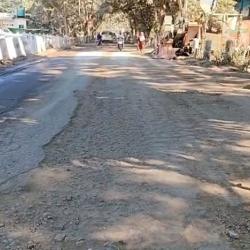The euphoria over the Paris Agreement coming into force on the 4th of November 2016 was short-lived, with the results of the US elections evoking widespread consternation 5 days later. The historic climate agreement being among the fastest international agreements ever to be ratified and come into force, and a President-Elect who has threatened to pull the world’s most powerful country out of it, must rank as the most dramatic shift from hope to despair among the environmentally conscious denizens on earth. This was to be a year of great hope driven by astute political leadership, undone by the whimsical outcome of an election that everyone took for granted.
The year 2016 began ominously, with temperatures at the North Pole soaring above zero on New Year’s Eve and the North Pole Environmental Observatory reporting 20 degree anomalies during January. The Norwegian archipelago of Svalbard was over 20°C above normal and although such extreme warming was short-lived, 2016 broke new frontiers for the Arctic region with the warmest winter on record and lowest amount of winter sea ice in recorded history. The extent of Arctic sea ice in the peak summer melt season now covers 40 percent less area than it did in the early 1980s. The Arctic Resilience Report published during the year says that the Arctic is perched on the edge of fundamental social and environmental change as it faces 19 tipping points due to climate change.
It was a brutal year for coral reefs around the world; from the Great Barrier Reef to Lakshadweep, warming ocean waters and acidification left a trail of dying and dead reefs. In April, scientists completed an extensive survey of the Great Barrier Reef, the largest living structure on Earth and found that 93 percent has been impacted by the most severe coral bleaching event on record.
For the first time, NASA shared a mid-year climate analysis because average global monthly temperatures during the first 6 months of 2016 greatly exceeded the respective monthly records from 1880. The United Nations declared that 2016 will set a new hottest year record for the third year in a row, meaning 16 of the 17 hottest years have been in this century. The World Meteorological Organization (WMO) report, published during the COP22 in Morocco, declared global temperatures in 2016 to be 1.2 C above pre-industrial levels, perilously close to the 1.5 C target the Paris Agreement had hoped to achieve.
The level of CO2 in the atmosphere has also broken records in 2016, with May seeing the highest monthly concentration of 407.7 ppm at the Mauna Loa Observatory in Hawaii. A WMO also said that human-induced global warming had contributed to at least half the extreme weather events studied in recent years, with the risk of extreme heat increasing by 10 times in some cases. Although extreme temperature rise in early 2016 was partly attributed to the El Niño phenomenon, scientists declared that greenhouse gas emissions from human activities remained the strongest factor.
As per a recent report, global concentrations of methane in the atmosphere rose rapidly in the decade ending 2016. It said methane concentrations rose precipitously between 2014 and 2015 and shot up by 10 or more parts per billion annually. It brings new global focus on methane, a more potent greenhouse gas trapping 28 times more heat than carbon dioxide, but less prevalent in the atmosphere, particularly due to the frightening prospect of vast amounts of it being released into the atmosphere from melting permafrost in the Arctic.
There was plenty to cheer as well with the global political leadership finally acting decisively on climate change. On April 22, world leaders from 175 countries inked the historic Paris Agreement, using Earth Day as a backdrop for the ceremonial inking of the global agreement that will, hopefully, lead the world away from the age of fossil fuels and save the planet from catastrophic climate change. On 5th October, the threshold for entry into force of the Paris Agreement was achieved and the Paris Agreement entered into force on 4th November, less than a year after the agreement at COP21 in December 2015.
In November, COP22 was held at Marrakech, Morocco, concurrently with the first session of the Conference of the Parties serving as the meeting of the Parties to the Paris Agreement (CMA 1) and the twelfth session of the Conference of the Parties serving as the meeting of the Parties to the Kyoto Protocol (CMP 12). COP22 declared that the parties to the Paris Agreement will conclude framing of implementation rules by 2018 and approved a five-year work-plan from 2017 to tackle emergent issues like slow-onset impacts, non-economic losses and migration of affected people. More than 20 countries signed the framework agreement of the International Solar Alliance to provide a collaborative platform for 121 prospective solar resource rich countries.
The Marrakech Action Proclamation hailed the extraordinary and irreversible momentum on climate change and called for matching commitments to maintain the momentum to reduce emissions and increase adaptation action in support of 2030 Sustainable Development Goals. The Climate Vulnerable Forum, a coalition of 47 developing countries, pledged to strive to achieve 100% renewable energy between 2030 and 2050. The “2050 pathways platform” was also launched to facilitate long-term decarbonisation strategies, sharing of resources and experiences in support of the national strategies by countries, cities and companies.
Earlier in October, India facilitated a legally binding deal signed by nearly 200 countries to reduce climate damaging hydrofluorocarbons (HFCs), known as super greenhouses gases, in products ranging from air-conditioners and refrigerators to shaving foams, at the Rwandan capital city Kigali.
Also in 2016, scientists confirmed that the ozone hole above Antarctica has start to heal, consequent to the 1987 Montreal Protocol to freeze and later phase out chlorofluorocarbons (CFCs) in aerosols and refrigeration. The healing of the hole in the ozone layer proves that the world can come together to tackle big environmental problems and hope for the success of the Paris Agreement.
2016 was the year solar panels finally became cheaper than fossil fuels, according to the World Economic Forum (WEF). The WEF declared in December that solar and wind is now the same price or cheaper than fossil fuels in more than 30 countries. For the first time, solar became the top fuel source in a calendar year in the US, according to the US Energy Information Administration. The US added about 125 solar panels every minute in 2016, about double the pace last year, reports the Solar Energy Industry Association.
In 2016, Solar Impulse completed the first circumnavigation of the globe with no fuel. The solar aircraft started the journey in 2015 and flew 40,000 km to promote the use of renewable energies and energy efficiency. Another team announced plans for the first boat, the ‘Energy Observer” to circumnavigate the globe powered solely by renewable energies and hydrogen. Recently France claimed to have opened the world’s first solar panel road. The 1 km road in a village in Normandy will be used by around 2,000 motorists a day during a two-year test period to try and generate energy to power the streetlights in the village.
A decade after ‘An Inconvenient Truth’ took climate change awareness to the realm of the masses, another documentary on the subject evoked popular interest in 2016. Leonardo DiCaprio’s ‘Before the Flood’ was made widely and freely available for viewing on its release on the 30th of October. Directed by Fisher Stevens, the film follows the Hollywood star and United Nations Representative on Climate Change as he explores impacted regions around the world and talks to experts. The film premiered on National Geographic Channel in 171 countries and was made freely available on the internet for millions of viewers, making it one the most important films of the year.
The year ahead will be crucial for action on climate change as the parties to the Paris Agreement start the work plans on emergent climate change related issues. If the new President pulls out the US from the Paris Agreement as he has threatened to, the agreement itself may be doomed as other countries may follow suit. As the world's largest economy and largest emitter of CO2, the US remains important, but not indispensable and should not be allowed to undermine the gains from the Paris Agreement and push global civilization to the precipice. The Paris Agreement represents the best chance to stop catastrophic warming and other nations must step in to assume leadership of the global environment movement.
- 7477 reads








Add new comment